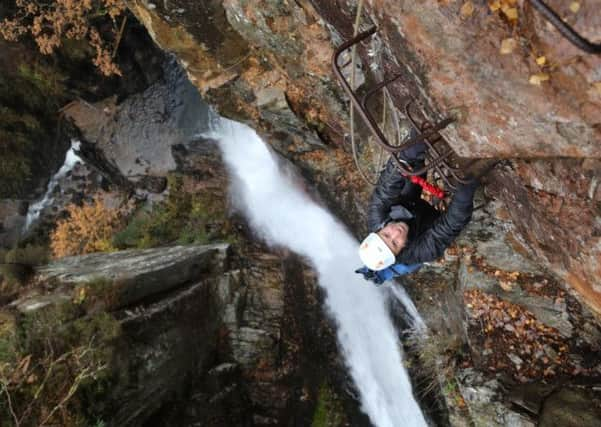Roger Cox: Helping hand for climbers a good thing?


Cue howls of derision from some members of the climbing community, who feel such artificial aids completely miss the point of setting out to conquer the world’s highest peak – namely, that it’s supposed to be a challenge. Comments posted online ranged from “escalators up and down would be even better” to “why not just put a cable car up there and be done with it?”
To be fair, the ladder plan (inevitably dubbed “the Hillary Stepladder”) has been formulated for honourable reasons. Because the Hillary Step is tricky to negotiate, and because climbers have to tackle it one at a time, it often causes a bottleneck near the top of the mountain during the peak climbing months of April, May and June. At an altitude of 8,790 metres, it is well inside the so-called Death Zone, where oxygen is so scarce that the human body can only survive for a limited time, so it’s not a great place to be standing around twiddling your thumbs (assuming you haven’t already lost them to frostbite). The faster climbers are able to get to the top of the mountain, the faster they’re able to get back down to a safe altitude again, so you can see the life-saving logic of the ladder.
Advertisement
Hide AdAdvertisement
Hide AdOver 300 people have died trying to climb Everest since Hillary and Tenzing first stood on top of the world in 1953 – how many of them would still be alive today if there had been steps on the Hillary Step?
Still, you can understand the frustration of the purists. Imagine having travelled all the way to Nepal, leaving our health & safety culture far behind, then slogging your way almost to the top of the planet’s tallest peak, only to be met with a nice shiny ladder when you get to a difficult bit, and – who knows – perhaps a government official with a clipboard, too, taking your name and issuing you with a little slip of paper with a number on to make sure you play fair and take your turn.
But if a ladder is installed, and it allows people to climb to the top of Everest who otherwise wouldn’t have been able to make it, that can’t be an altogether bad thing, can it?
I suppose that’s the logic behind another, less high-profile project to hammer metal steps into a large lump of rock which launched here in Scotland this weekend. Up until recently, even the boldest of climbers would have thought twice before tackling the sheer, slippery walls of rock around the dramatic Grey Mare’s Tail waterfall near Kinlochleven.
Now though, thanks to outdoor activity company Vertical Descents, people with no prior climbing experience will be able to clamber around some 450 metres of metal “staples” (U-shaped step/handholds) and cable bridges attached to the rock face, getting up close and personal with one of Scotland’s largest waterfalls in a way that would only previously have been achievable for serious climbers with a lot of kit and even more free time.
As with the Hillary Stepladder, the responses to the so-called Via Ferrata Scotland scheme haven’t been universally positive – one Glasgow-based climber kicked off a huge debate on the ukclimbing.com forum when he commented: “I can’t believe that an outdoor company can be proud of [putting] steel staples down the side of a fantastic natural beauty spot.” But whereas Everest is already a climbing route (perhaps the climbing route), it’s hard to find a record of any climbing going on around the Grey Mare’s Tail. Nobody seems to be saying an existing climbing route has been destroyed – instead, the via ferrata at Kinlochleven will create an exhilarating, entry-level climbing experience where before there was none. True, the handful of people who walk the trail to the waterfall each weekend might occasionally have their view spoiled by groups of people in colourful jackets clinging to the cliffs, but they won’t be there all the time, and the structures attached to the rock are unobtrusive. And besides, nobody ever complains that climbers in day-glo jackets are spoiling the views of Ben Nevis.